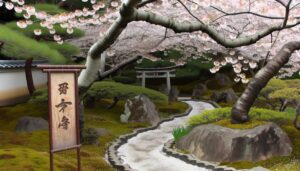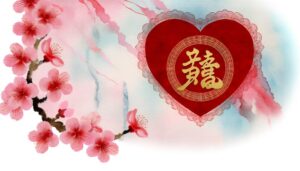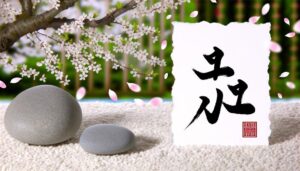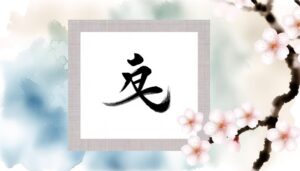How to Draw the Fearless Japanese Symbol for Courage
The Japanese symbol for courage, 勇 (yū), is deeply rooted in ancient Chinese calligraphy and philosophy, integrated into Japanese culture during the Heian period. It encapsulates moral integrity, valor, and personal strength, evolving from physical bravery to encompass moral courage and personal integrity.
This symbol aligns with the Bushido code and Zen teachings, reflecting a collective ideal in Japan's societal and philosophical framework. Modern interpretations of 勇 extend to facing life's challenges and adapting to cultural shifts.
By exploring its historical origins and symbolic significance, one uncovers a multifaceted representation of courage within and beyond Japanese culture.
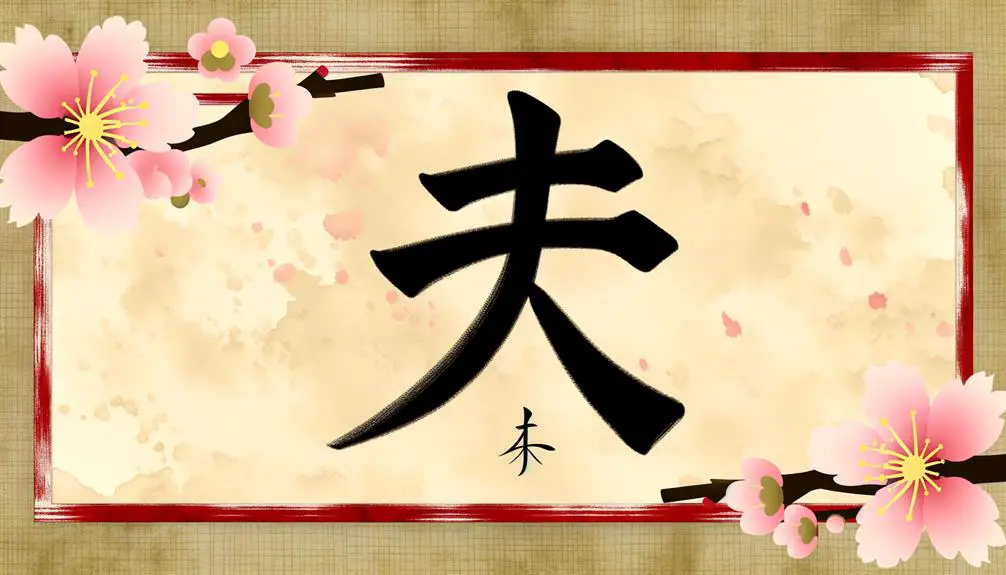
Key Takeaways
- The Japanese symbol for courage is '勇' (yū), representing moral fortitude and personal strength.
- Yū encompasses physical bravery and moral courage, reflecting the Bushido code and Zen teachings.
- The symbol is deeply rooted in Japanese culture, integrating historical, philosophical, and societal values.
- It is widely used in art, literature, and tattoos worldwide, symbolizing bravery and resilience.
- Yū serves as a motivational emblem in personal development and narratives of heroism and resilience.
Historical Origins
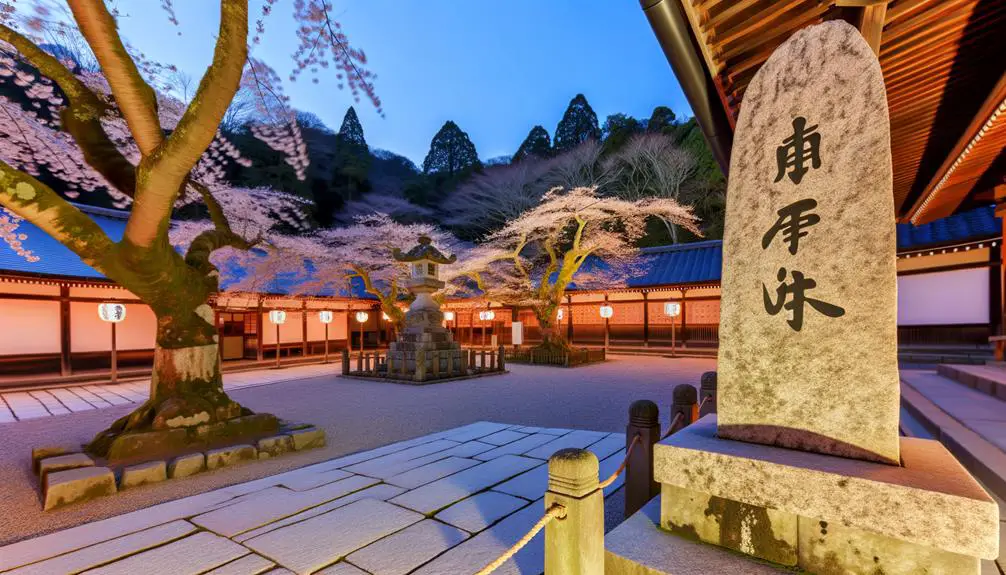
The historical origins of the Japanese symbol for courage, known as '勇' (yū), can be traced back to ancient Chinese calligraphy and philosophy, where it was first conceived and later integrated into Japanese culture during the Heian period.
Rooted in the classical Chinese character '勇' (yǒng), it encapsulated ideals from Confucian and Daoist thought, emphasizing moral fortitude and valor.
During the Heian period (794-1185 AD), Japan's cultural assimilation from China was at its peak, leading to the adoption and adaptation of numerous Chinese characters.
The symbol '勇' was not merely borrowed but also nuanced to fit the Japanese sociocultural context, reflecting a blend of imported philosophical ideals and indigenous interpretations.
As a result, '勇' became an essential part of Japanese lexicon and ethos.
Meaning and Interpretation
The Japanese symbol for courage, 勇 (yū), encapsulates profound cultural significance and has been shaped by centuries of historical context and evolution.
Its interpretation extends beyond literal bravery, reflecting a complex interplay of moral integrity, social responsibility, and personal strength.
Understanding this symbol requires examining its roots and adaptations within various cultural and historical frameworks.
Symbolic Cultural Significance
In Japanese culture, the kanji for courage (勇) embodies a profound and multifaceted significance, interweaving historical narratives, philosophical principles, and societal values.
This character transcends mere bravery, encapsulating a moral fortitude that aligns with the Bushido code, emphasizing honor and resilience.
Philosophically, it resonates with Zen teachings, advocating for inner strength and mental clarity amidst adversity.
Societally, its importance is reflected in communal behaviors and national ethos, where courage is not only a personal virtue but a collective ideal.
This kanji, hence, represents a holistic approach to courage, merging personal integrity with broader cultural imperatives, offering an inclusive understanding of bravery that integrates individual actions with communal harmony and ethical living.
Historical Context and Evolution
Tracing the historical context and evolution of the kanji for courage (勇) reveals a dynamic interplay between linguistic development and sociocultural transformations in Japan. Originating from ancient Chinese script, the character initially conveyed a sense of physical bravery, often associated with warriors and martial valor.
Over centuries, as Japan's societal structures evolved, so did the kanji's interpretation. During the Edo period, the concept extended beyond physical prowess to encompass moral courage and personal integrity, reflecting the influence of Confucian ethics.
In modern times, 勇 symbolizes not only traditional bravery but also the courage to face life's everyday challenges. This multifaceted evolution underscores the kanji's enduring relevance, adapting to shifting cultural paradigms while retaining its core essence.
Symbolism in Japanese Culture
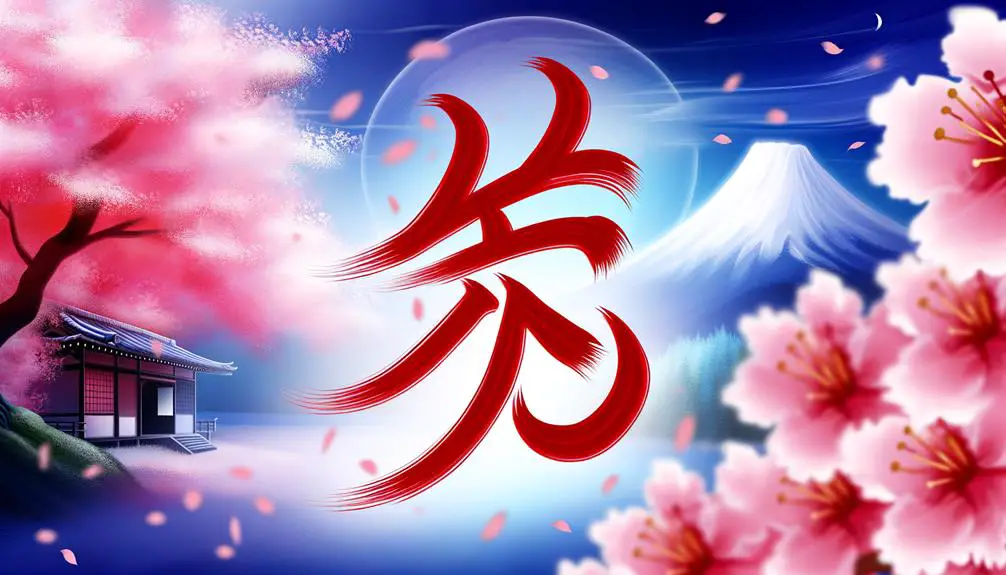
Symbolism in Japanese culture intricately weaves historical, philosophical, and aesthetic dimensions to convey profound meanings and societal values. Rooted in Shintoism and Buddhism, symbols often embody spiritual beliefs and moral principles.
For instance, the cherry blossom signifies the ephemeral nature of life, reflecting Buddhist notions of impermanence. Traditional motifs like the crane represent longevity and good fortune, while the koi fish symbolizes perseverance and strength.
These symbols are not mere artistic expressions but are deeply embedded in Japanese identity and ethos. They serve as visual narratives that communicate collective experiences and shared values, fostering cultural continuity.
Through symbolism, Japanese culture perpetuates its rich heritage, enabling individuals to connect with historical traditions in contemporary contexts.
Kanji Calligraphy Styles
Kanji calligraphy styles, each with distinct characteristics and historical significance, play an essential role in the artistic and cultural expression of Japanese writing.
Shodō, the way of writing, encompasses several styles, including Kaisho (block script), Gyōsho (semi-cursive), and Sōsho (cursive).
Kaisho is characterized by its precise, angular strokes, often used in formal documentation.
Gyōsho, with its fluid and more connected strokes, strikes a balance between readability and artistic expression.
Sōsho features highly stylized, flowing lines, emphasizing speed and spontaneity, suitable for expressive art forms.
These styles not only reflect the aesthetic values but also the evolution of Japanese calligraphy, allowing for diverse interpretations of the kanji symbol for courage, or 勇 (yū).
Tattoo Significance
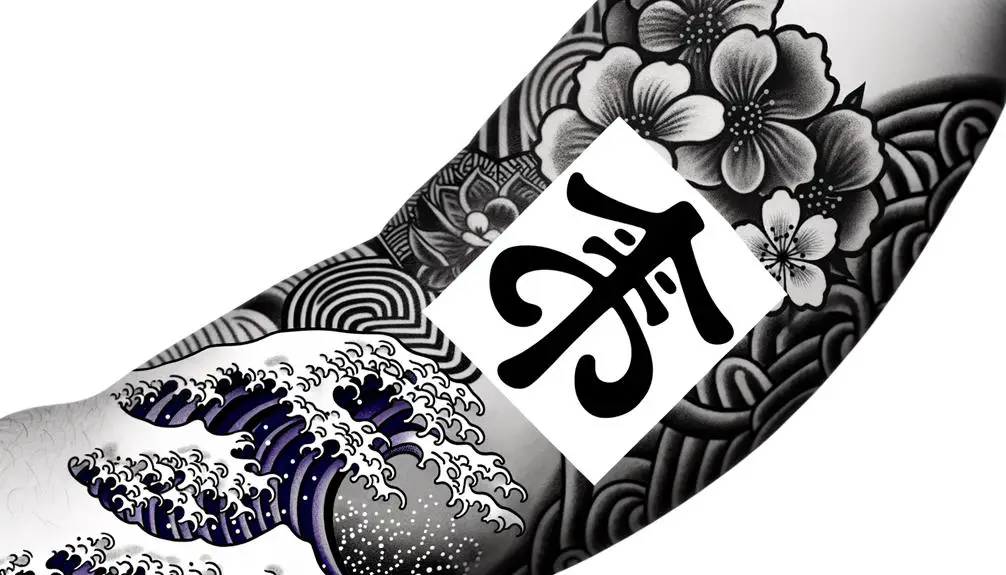
In contemporary society, the Japanese symbol for courage (勇 – yū) holds profound significance when chosen as a tattoo, often embodying the wearer's personal journey and resilience. This emblem is not merely aesthetic; it encapsulates a spectrum of human experiences and aspirations. Tattoos featuring this kanji serve as permanent reminders of inner strength, bravery, and the ability to overcome adversity. The emotional depth associated with this symbol can be illustrated as follows:
| Emotion | Representation | Impact on Wearer |
|---|---|---|
| Strength | Overcoming challenges | Enhanced self-esteem |
| Resilience | Endurance through pain | Improved confidence |
| Bravery | Facing fears | Personal empowerment |
| Perseverance | Continuous effort | Lifelong motivation |
Such tattoos transcend cultural boundaries, offering universal relevance and profound personal meaning.
Popularity in Art
The incorporation of the Japanese symbol for courage (勇 – yū) into various art forms has seen a significant increase, reflecting its broad cultural resonance and the universal appeal of its underlying themes.
This symbol is often found in contemporary visual art, from traditional calligraphy to modern digital designs, where it serves as a powerful motif representing resilience and inner strength. Artists are drawn to the symbol not only for its aesthetic qualities but also for its profound philosophical implications.
The resurgence of interest in Eastern philosophies and the globalization of cultural symbols have further amplified its visibility. This trend underscores the dynamic interplay between cultural heritage and contemporary artistic expression, highlighting the enduring relevance of age-old concepts in modern contexts.
Use in Literature
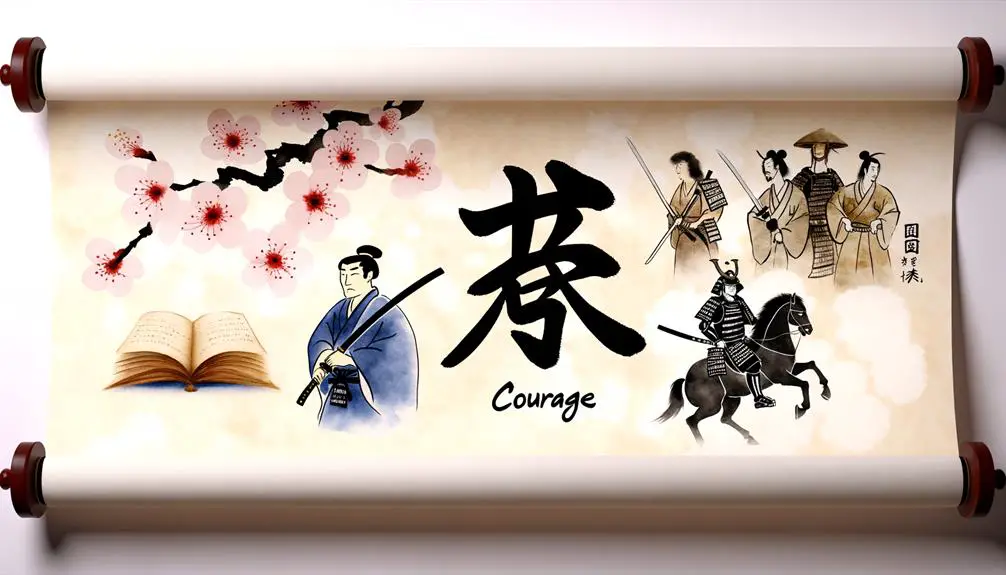
Beyond its prevalence in visual art, the Japanese symbol for courage (勇 – yū) also occupies a prominent place in literature, where it enriches narratives with themes of bravery and moral fortitude. This kanji often appears in classical and contemporary texts, symbolizing characters who embody fearless resolve. The literary use of yū evokes deep emotional resonance by highlighting:
- Self-sacrifice: Characters who risk their lives for others.
- Moral integrity: Individuals standing firm in the face of ethical dilemmas.
- Perseverance: Heroes overcoming insurmountable odds.
- Redemption: Protagonists finding courage to amend past wrongs.
These elements, woven into the fabric of Japanese storytelling, underscore the timeless and universal appeal of courage as a pivotal human virtue.
Modern-Day Inspirations
Contemporary interpretations of the Japanese symbol for courage (勇 – yū) continue to inspire individuals, manifesting in diverse fields such as personal development, social activism, and popular media.
In personal development, yū serves as a motivational emblem, encouraging people to overcome fears and achieve goals.
Social activists adopt the symbol to embody the bravery required to challenge injustices and advocate for societal change.
Meanwhile, popular media, including films, literature, and video games, frequently incorporates yū to resonate with audiences through narratives of heroism and resilience.
These modern-day applications demonstrate the enduring relevance of the symbol, highlighting its capacity to transcend cultural boundaries and time, thereby reinforcing its universal appeal and profound impact on contemporary society.
Personal Stories of Courage
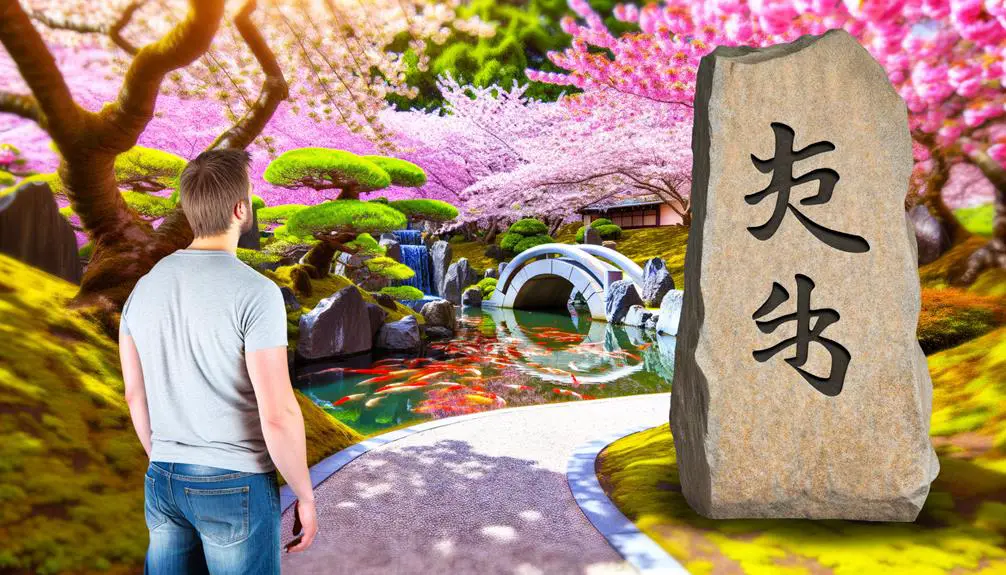
Drawing from diverse cultural contexts and individual experiences, personal stories of courage illuminate the profound ways in which the Japanese symbol for courage (勇 – yū) manifests in everyday life. Through these narratives, we observe the embodiment of this ancient virtue:
- Overcoming Illness: A survivor's relentless fight against a terminal disease.
- Standing Against Injustice: An activist's unwavering stand in the face of societal oppression.
- Enduring Adversity: An individual's perseverance through severe economic hardships.
- Acts of Heroism: A bystander's quick response during a life-threatening emergency.
These stories collectively highlight the universal resonance of 勇, transcending cultural boundaries and underscoring the intrinsic human capacity to confront fear with valor. Such accounts offer a rich tapestry for analyzing the multifaceted expression of courage in contemporary contexts.
Global Influence
Across various cultures, the Japanese symbol for courage (勇 – yū) has permeated global consciousness, reflecting a universal appreciation for acts of bravery and resilience. This ideogram has transcended its linguistic origins, influencing art, literature, and even tattoos worldwide. The global adoption of yū symbolizes not only courage but also a cross-cultural embrace of the values it represents.
| Region | Usage Context |
|---|---|
| North America | Tattoos, Pop Culture |
| Europe | Art, Literature |
| Asia | Traditional Tattoos |
| Australia | Educational Material |
| Africa | Motivational Art |
How to Draw Yū
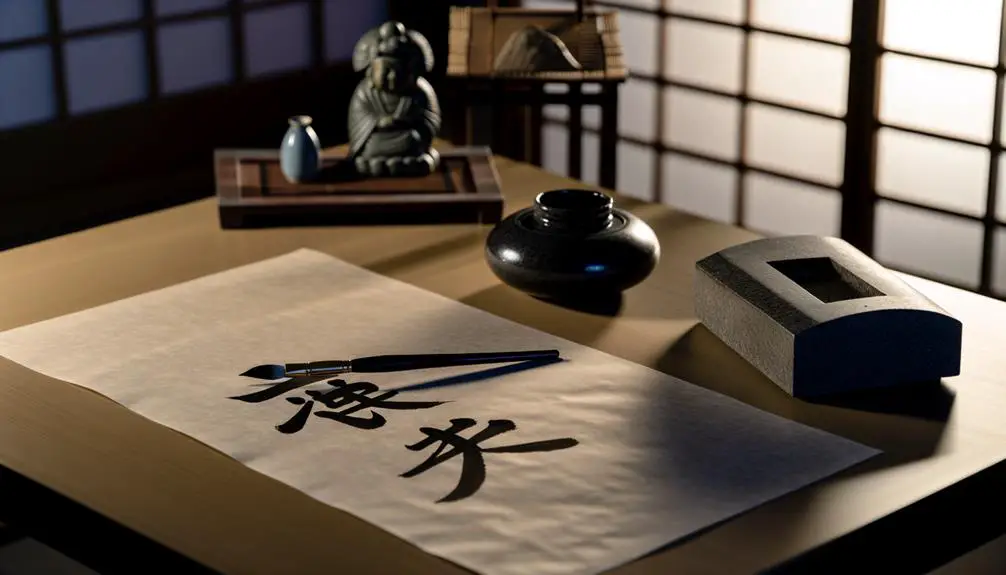
Understanding the global resonance of the Japanese symbol for courage (勇 – yū) necessitates a closer examination of its aesthetic and structural composition, which can be achieved by learning how to accurately draw the character.
This process involves understanding the balance and flow integral to kanji. Here's a concise guide to drawing yū:
- Foundation Stroke: Begin with the vertical line, establishing the character's central axis.
- Structural Complexity: Add the horizontal strokes and smaller supporting lines to build the character's framework.
- Symmetry: Guarantee the left and right components mirror each other, reflecting harmony and balance.
- Final Flourish: Finish with the concluding strokes, embodying the essence of courage with fluidity.
Conclusion
The Japanese symbol for courage, represented by the kanji '勇' (yū), embodies a rich tapestry of historical depth and cultural significance.
Juxtaposing ancient samurai valor with modern-day personal triumphs, it serves as a timeless emblem of resilience.
From the artistry of calligraphy to the permanence of tattoos, this symbol traverses generations and geographies.
As a global icon, it continues to inspire acts of bravery, merging traditional values with contemporary expressions of strength and fortitude.


